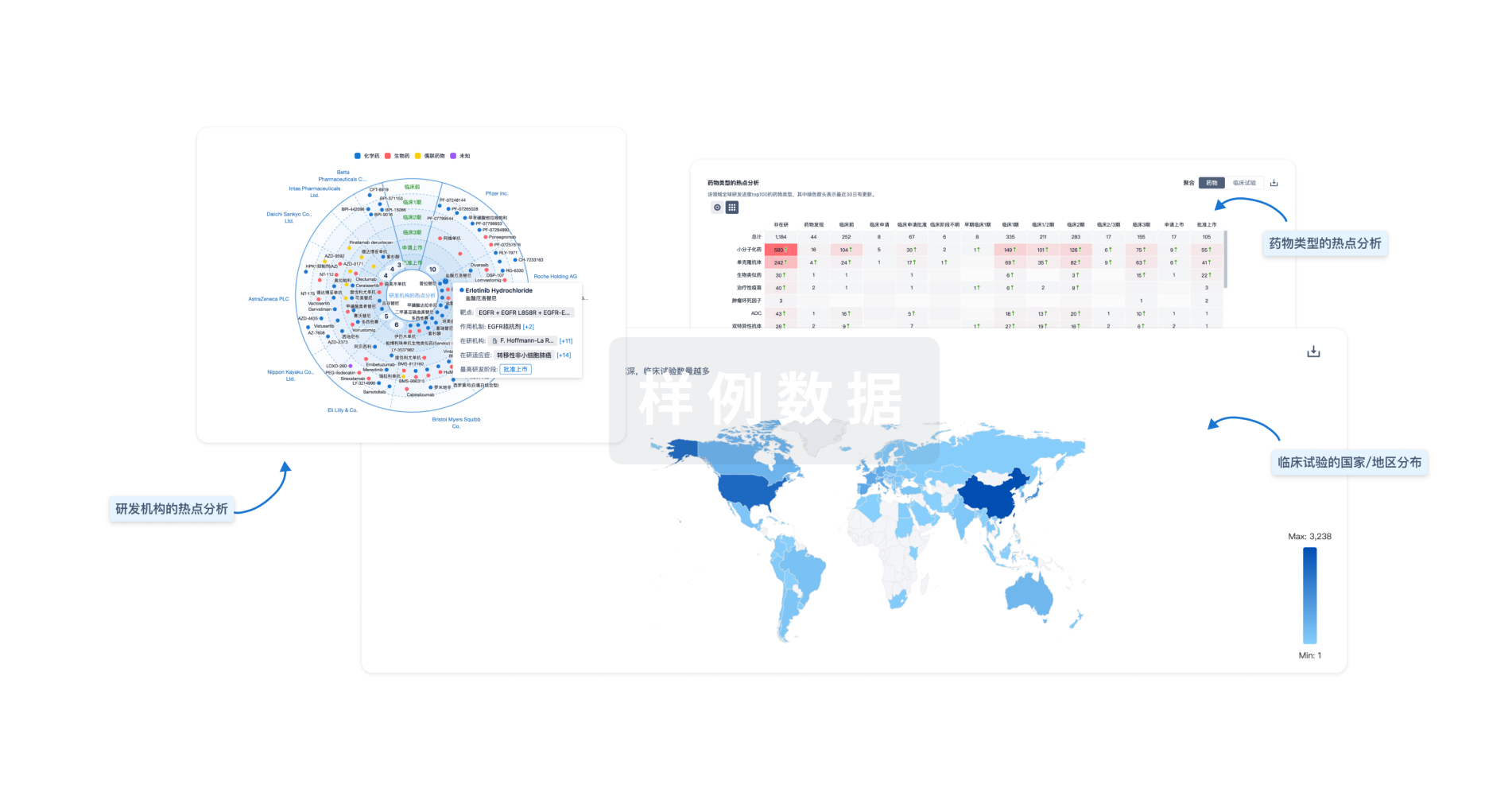预约演示
更新于:2025-05-07
Epilepsy, Rolandic
罗兰多癫痫
更新于:2025-05-07
基本信息
别名 BCECTS、BECRS、BECTS + [71] |
简介 An autosomal dominant inherited partial epilepsy syndrome with onset between age 3 and 13 years. Seizures are characterized by PARESTHESIA and tonic or clonic activity of the lower face associated with drooling and DYSARTHRIA. In most cases, affected children are neurologically and developmentally normal. (From Epilepsia 1998 39;Suppl 4:S32-S41) |
关联
67
项与 罗兰多癫痫 相关的临床试验NCT06545708
Music and Cognitive Deficits in Self-Limited Epilepsy with Centrotemporal Spikes
Self-limited epilepsy with centrotemporal spikes (SeLECTS) is the most frequent epilepsy syndrome in children between the ages of 4 and 13 years. SeLECTS is associated in 15 to 30% of patients with specific cognitive deficits, including in particular disorders in language, visuo-spatial memory, declarative memory, and attention. SeLECTS has the potential to evolve into Landau-Kleffner syndrome, the most extreme form of SeLECTS including symptoms of auditory agnosia and aphasia, with potential risks of persistent neuropsychological impairments. In a recent study in adults who had suffered Landau-Kleffner syndrome during childhood, the investigators have shown that these patients, in addition to their known deficit in verbal short-term memory, also exhibit persistent musical difficulties during adulthood, with in particular deficit in melody and rhythm short-term memory.
In the present project, the investigators intend to enlarge the understanding of cognitive deficits generated by SeLECTS in children by investigating the integrity of music perception, both for melody and rhythm. To date, data about music perception in children with epilepsy are scarce and we do not know how distinct components of melody and rhythm perception and memory may be altered.
In the present project, the investigators intend to enlarge the understanding of cognitive deficits generated by SeLECTS in children by investigating the integrity of music perception, both for melody and rhythm. To date, data about music perception in children with epilepsy are scarce and we do not know how distinct components of melody and rhythm perception and memory may be altered.
开始日期2024-11-13 |
申办/合作机构 |
NCT05973643
Study by 1H NMR of the Variations of the Metabolome During the Course of Electroconvulsive Therapy in Patients With Major Depressive Episode
Investigators will measure the variation of blood Metabolome through 1H NMR at several time points during the course of electroconvulsivetherapy in patients with a major depressive episode. Patients with a major depressive disorder or a bipolar disorder and a current major depressive episode will be included in this study. Investigators hypothesized that Metabolome could be a source to predict response during ECT and to help understanding underlying biological mechanisms.
开始日期2024-03-11 |
ChiCTR2400081289
Study on combined transcranial direct current stimulation to improve cognitive side effects in patients with depression after electroconvulsive surgery
开始日期2024-03-01 |
申办/合作机构- |
100 项与 罗兰多癫痫 相关的临床结果
登录后查看更多信息
100 项与 罗兰多癫痫 相关的转化医学
登录后查看更多信息
0 项与 罗兰多癫痫 相关的专利(医药)
登录后查看更多信息
1,369
项与 罗兰多癫痫 相关的文献(医药)2025-07-01·Journal of Neuroimmunology
Clinical characteristics and immunotherapy efficacy in autoimmune-associated benign epilepsy with centrotemporal spikes: A prospective cohort study
Article
作者: Li, Ling ; Wu, Jing ; Lian, Di ; Xu, Danfeng ; Zhang, Dandan ; Zhao, Shengnan ; Zhang, Zhijie
2025-05-01·Current Psychiatry Reports
ECT and Delirium: Literature Review and a Pediatric Case Report
Review
作者: Anani, Ayah ; Reynard, Hannah ; Ghaziuddin, Neera
2025-04-01·European Journal of Neurology
Raised Intracranial Pressure in Seizures Induced by Electroconvulsive Therapy
Article
作者: Hollestelle, Rutger V. A. ; De Wit, Marie‐Claire Y. ; Kamp, Marcel A. ; Mathijssen, Irene M. J. ; van Veelen, Marie‐Lise C. ; Klimek, Markus ; Maissan, Iscander M. ; Neuteboom, Rinze ; Dibué, Maxine ; Pluijms, Esther ; Haitsma, Iain K. ; Birkenhager, Tom K. ; Spoor, Jochem K. H.
6
项与 罗兰多癫痫 相关的新闻(医药)2024-12-03
·动脉网
神经调控中心的建设正在成为一道靓丽的风景线。国内公立、民营医疗机构目前均在加快神经调控中心及门诊的建设步伐。今年7月,青岛大学医疗集团西海岸第二医院神经调控远程诊疗中心正式揭牌;紧接着的8月,天津市安定医院(天津市精神卫生中心)依托神经调控中心开设的神经调控门诊正式接诊;11月,沈阳静安医院神经调控中心、精神疾病神经调控工程研究中心宣告正式成立。在这背后,是对神经调控技术可改善包括阿尔茨海默、抑郁、帕金森等老年疾病症状的认可。而更深层次的动因,则在开欣医疗与沈阳静安医院携手举办的2024年暨第二届“老年认知障碍研究及多学科治疗”前沿探索高峰论坛中得以呈现。
大会上,神经内科、精神医学科、老年医学科、计算机科学等学科人才在内的多位临床顶尖专家,就老年精神神经疾病在预防医学、临床医学及康复护理方向面临的问题及创新方案展开了探讨,而核心话题即本次会议的主题正是“神经调控和AI技术引领老年阿尔茨海默病多学科诊疗新纪元”。
01
药物治疗耐受度低、心理治疗难度大,老年期精神障碍治疗的两大困境
根据国家统计局数据,2023年年末全国人口为140967万人,其中60周岁及以上人口数量为29697万人。随着我国老龄人口进一步接近3亿大关,老年疾病负担也进一步提升。其中,阿尔茨海默病作为最常见的神经变性病,其患病率及经济负担更是呈现出20年翻一番的增长态势。数据显示,2020年我国60岁以上人群中,轻度认知障碍患者患病率为15.5%、约3800万,痴呆患者总患病率为6%、约1500万(其中阿尔兹海默AD患病率约3.9%)。2023年,我国仅AD患者经济负担便达到1.6万亿/年。痴呆患者往往表现为认知、行为异常及其造成的生活能力下降。北京大学第六医院于欣教授指出,60岁以上的老年人群中较为常见的精神障碍是老年期抑郁障碍(LLD),患者常呈现出精力不足和情感冷漠、躯体症状、精神运动迟缓等特征。目前,LLD在轻度认知障碍患者中的患病率更是高达32%。抑郁可能是痴呆的前期症状或两者具备共同病因。《柳叶刀》则指出,抑郁是痴呆的可改变的风险因素。
北京大学第六医院 于欣教授
老年抑郁有着更隐匿、更复杂、更难治、易复发、高共病等特点。目前针对老年抑郁的主要治疗方式包括药物治疗与心理治疗等,但现有治疗方式存在一定局限——以药物治疗为例,一方面,老年群体本身躯体疾病及用药,限制着治疗药物的选择。针对神经递质的抗抑郁药物在老年患者中效果较差,副作用也比在年轻患者中多;另一方面,因精神类疾病病因及发病机制尚未明确,缺乏针对性治疗药物,目前的药物治疗方案仅可在短期内控制部分症状,约有1/3左右的患者对药物治疗的反映不佳,从而导致疾病病程迁延不愈,发展为难治性病例。而心理治疗由于耗时久、起效慢、成本高,心理治疗专业人员水平参差不齐等问题,在我国的进展仍旧受到一定限制。
如何更好地为认知障碍患者提供有价值的医疗服务,成为了一众医疗机构需要面临的问题。
02
效果显著、安全性高、个性化,神经调控技术成临床应用“宠儿”
通过“植入情绪开关”重新掌握自己的人生,在2023年,一份关于瑞金医院抑郁症患者的报道引发了外界对神经调控的热议。神经调控,是基于细胞的电属性,由研究人员利用电、磁、光、声等物理手段、通过侵入性或非侵入性技术开发的新型调控手段。目前常用的技术包括域下的经颅磁治疗、直流电刺激、交流电刺激、强交流电刺激,域上的磁抽搐治疗、电休克治疗等。它们能够直接干扰中枢神经系统、周围神经系统中相邻或远隔部位的神经元膜电位或细胞电传导,以发挥细胞兴奋、抑制或调节作用。这项技术正通过临床向外界展现其魅力。上海市精神卫生中心张天宏教授分享指出,丹麦的一项研究表明“ECT(电抽搐治疗)与70岁及以上患者老年认知障碍发生率的降低相关”;另外一项覆盖了不同年龄群体的147例患者(完成至少10次TMS)的真实世界研究表明,“老年患者接受rTMS(经颅磁刺激)治疗2周和4周后,躯体焦虑的改善优于精神焦虑”。
上海市精神卫生中心 张天宏教授
在r-TMS临床治疗指南中,也将其作为涵盖帕金森病、阿尔茨海默病等在内的老年疾病治疗推荐手段。这使得包括r-TMS在内的神经调控技术成为临床应用的“宠儿”。
A级推荐:脑卒中急性期、抑郁症、神经性疼痛。
B级推荐:帕金森病的抑郁症状和运动功能、创伤后应激障碍、脑卒中亚急性期及慢性期
C级推荐:失眠、强迫症、精神分裂症、意识障碍、肌张力障碍、阿尔茨海默病等
在有效性外,神经调控疗法治疗效果的安全性、个性化也进一步彰显。其联合药物治疗能显著提高患者的康复速度,减少患者的药量。优势无疑十分明显,一方面,神经调控结合药物治疗和心理治疗等系统性治疗,可提升患者治疗效果;另一方面,其可以带来更为良好的预后,患者可以更好地回归社会,减轻社会负担。
在大会上,主办方也宣布了成立神经调控治疗中心,重点专攻精神科复杂难治性疾病,并治疗多类型精神障碍,以满足多年龄段人群需求。医院将以先进的脑功能评估与检测技术为依托、基于影像电生理等技术评估制定精准的神经调控治疗方案,打造诊断、检查、治疗三位一体的诊疗模式;并基于新成立的精神疾病神经调控工程研究中心进行创新探索。
据悉,沈阳静安医院神经调控中心团队将配置副高及以上专家6名、博士生导师1名、博士1名、硕士3名。神经调控中心名誉主任朱刚教授来自中国医科大学附属第一医院精神医学科、是精神病与精神卫生学教研室主任,具备丰富的临床及科研经验。此外,医院配备有多款脑功能评估与检测设备、TMS/tES/生物反馈治疗/MECT等神经调控设备,后续设备将配合药物治疗、心理治疗等联合治疗,达到高效治疗效果。
这标志着其在精准医疗与神经科学领域迈出的重要一步,将为患者带来更创新、高效的治疗方案。与此同时,它也将进一步推进国内精神科向神经调控精准治疗方向迈进。
03
预防、筛查、诊断、治疗全链条创新,多学科协作解决“认知障碍”难题
AD是连续性疾病,病理生理进程从AD出现临床症状之前的15~20年就已开始,疾病的早期筛查、预防、诊断、治疗显得尤为重要。从疾病筛查预防来看——在国内,受限于医疗资源问题,专科筛查模式难以实现推广;而国际通用筛查工具在国内也难以适用。李霞教授所在的上海交通大学医学院附属精神卫生中心,推出了适老化、游戏化、自主化的智能筛查工具,对老年认知障碍风险进行筛查及社区干预,建立起了分级、分层的16万老年人特色漏斗队列。高质量的大型队列建设是AD早期防治的关键。当前国际队列存在非AD导向社区队列、缺乏专业认知评估、人群种族差异较大等问题,国内队列面临顶层设计缺乏、资源共享机制欠缺、优质长期随访体系欠缺等问题。郁金泰教授所在的复旦大学附属华山医院牵头构建了中国健康衰老与痴呆社区队列,纳入具备跨尺度多模态生物医学数据受试者2万例。他提到,通过积极干预可以预防47%以上的AD。在此基础上,华山医院也牵头制定了AD循证预防方案。
复旦大学附属华山医院 郁金泰教授
从疾病诊断来看——与会专家均指出了诊断中生物标志物的重要性。目前,围绕阿尔茨海默病血浆、脑脊液和分子影像生物标志物的不同特点,学界做了一些新的探索:PET可显著改善认知障碍患者的病因学诊断和临床管理;脑脊液中基于AI技术的采纳进一步揭示了AD早期精准诊断生物标志物,如YWHAG、SMOC1、PIGR、TMOD2等;AD早期生物标志物血浆GFAP得以发现;此外基因组策略提示AD发病新基因及致病机理,基于系统绘制人类健康与疾病蛋白组学图谱,揭示了更多痴呆干预新靶点。中国医科大学附属第一医院刘华岩教授,提醒临床工作者避免对EOAD(早发型阿尔茨海默患者)的误诊、漏诊。所谓EOAD患者,即65岁前出现认知功能障碍的阿尔兹海默患者,它约占阿尔兹海默患者的5%-10%。早发型AD患者记忆障碍不突出,但是BPSD(精神行为异常)突出,在临床中极易被忽视和误诊。由于患者发病更为年轻,误诊对患者生活质量影响也更大。
从疾病治疗来看——在药物治疗、心理治疗之外,北京老年医院张守字教授提及到认知障碍的非药物干预方式,包括神经调控、回忆疗法、运动疗法、音乐治疗、体力活动、芳香疗法、安抚疗法、饮食疗法、认可疗法等。中国医科大学护理学院刘宇教授强调指出认知训练干预手段的重要性。诸如沈阳静安医院目前便在为失智症老人提供非药物的“4+1“干预方案,通过认知刺激、运动训练、社交互动、生活训练+自主训练方式实现认知干预。为了更好地针对个体差异干预,在开展干预时,医院会针对失智老年人及安宁疗护的患者进行健康状况、认知能力、心理状况和社会功能、环境等方面的全面评估,并通过奥马哈分类系统发现患者现存或潜在的健康问题,在此基础上进行个性化干预。
当前,居家养老仍旧是主流形式。认知障碍患者如何更好地回归家庭,是医院需要面临的问题。医院基于HSH模式,实现了从医院到社区到家的医疗服务提供,保障患者在场景转移过程中仍旧获得高质量的医疗服务。并且,在患者入院时,医院基于多学科协作的方式,帮助实现患者评估与诊疗,并以认知障碍老人为中心,开展多元化、个性化、功能性的服务。在医生短缺的当下,如何更好地提供服务显得尤为重要,数字化技术应用无疑是题中之义。开欣医疗总裁曹利指出,“在对精神疾病治疗过程中,我们意识到了老年认知障碍疾病的诊疗需求,构建起了自身独特的HSH模式及多学科协作模式实现差异化发展。目前,我们在辽沈地区有着超300家互联网诊室,随着与上海精神卫生中心合作的达成,后续会引入智能化筛查评估体系,实现对区域内潜在患者的筛查检出;并且将进一步探索AI个性化认知训练,提供更具针对性的训练方案;更为重要的是,我们在进一步打造智慧化病房,降低康复对人工的依赖,减轻医护工作量,将更多时间精力放在患者诊疗中,让疾病从无法诊治变得‘能诊能治能防’。”
*封面图片来源:123rf
如果您想对接文章中提到的项目,或您的项目想被动脉网报道,或者发布融资新闻,请与我们联系;也可加入动脉网行业社群,结交更多志同道合的好友。
近
期
推
荐
声明:动脉网所刊载内容之知识产权为动脉网及相关权利人专属所有或持有。未经许可,禁止进行转载、摘编、复制及建立镜像等任何使用。
动脉网,未来医疗服务平台
2024-08-07
·动脉网
据世界卫生组织称,抑郁症是全球致残的主要原因之一,影响着约 2.64 亿各年龄段的人,18-25 岁的年轻人所占比重较大。据估计,这种疾病每年造成的损失高达 1 万亿美元。
目前,治疗抑郁症的常见方案有抗抑郁药物和心理治疗,但两者均存在一定局限性。抗抑郁药物起效时间较长,服用后可能产生口干、肠胃不适等副作用。长期使用抗抑郁药可能导致依赖性,停药时可能出现戒断症状,如头痛、眩晕和情绪波动。而心理治疗则存在患者依从性难以保障、效果不稳定、对严重病例效果有限、费用高昂等问题。
为了解决抑郁症治疗领域未被满足的临床需求,Sooma选择入局。这是一家成立于2013年的芬兰医疗创新企业,它开发了一种新型的抑郁症治疗方式,旨在为药物治疗有效性不足或心理治疗机会有限的患者提供灵活、简单、方便且负担得起的治疗方案。
精准控制刺激剂量与目标,经一次指导后便可独立居家使用
我们的脑功能依赖于电信号传导。当人们经历抑郁时,这种信号就会在大脑的某些区域变得不平衡。这些大脑区域位于背外侧前额叶皮层(DLPFC)。研究表明,对于抑郁患者,左侧DLPFC的活动减少,而右侧DLPFC的活动过度。
Sooma抑郁症疗法专门针对这些区域以缓解抑郁症状。该疗法采用经颅直流电刺激(tDCS) 技术,使用公司的 Ⅱ 类医疗设备 Sooma tDCS 进行治疗。tDCS 使用温和电流刺激大脑并缓解抑郁症状,无需药物治疗。通过在头帽内的两个电极传递微弱电流,该系统在左侧电极附近刺激活动,同时减少右侧电极附近的活动。这个过程有助于恢复这两个大脑区域之间的平衡,从而减少抑郁症状。
该解决方案遵循三个关键原则:能够控制刺激剂量、刺激目标必须准确、患者必须能够自我实施刺激。
该疗法使用的配件包括头帽、电极、凝胶垫和导电介质。Sooma头帽确保在每次治疗过程中刺激大脑的正确区域。两个电极由两个电极杯和一组电缆组成;每个电极杯中放置一个浸泡在盐水溶液(导电介质)中的凝胶垫,并固定在头帽上。电缆则连接到设备。
Sooma tDCS
tDCS 的效果基于经颅刺激,即向患者的大脑传递电流。电流需要穿过头发和皮肤等,这些组织会形成电阻,因此刺激器需要足够的功率来传递所需的电流。为了满足这一要求,Sooma tDCS 配备了自动电阻监测功能,可以保持电流传递的恒定。
同时,电极放置的位置是否正确对于刺激非常重要。tDCS 是一种弥散性刺激方法,这意味着电流会在电极下方的大脑区域扩散。为了保证刺激的准确性,传统解决方法是测量电极位置,这需要技术人员或受过训练的护士进行专业操作,且耗时较长。Sooma 头帽具有预配置的放置位置。并且,根据不同的头围,头帽设计有不同的尺寸型号,可以帮助患者轻松地精确放置电极,以便居家使用。Sooma 透露,目前,欧洲专利局(EPO)已表示,将对公司用于治疗抑郁症和慢性疼痛的医疗级脑刺激设备的突破性电极放置系统授予专利。
此外,所用电极的大小对于提升刺激区域的精准度也至关重要。Sooma Comfort 刺激配件旨在限制电解质的扩散,并保持电极下方的刺激区域。这确保了剂量被传递到目标大脑区域,以获得最佳的治疗效果。
值得注意的是,Sooma 抑郁症治疗设备从一开始就设计为适合家庭治疗,其设备和器材小巧易携带,设备易于操作,准备时间仅需约五分钟,大多数患者只需一次指导疗程后便可以独立居家使用。该解决方案包括多个自动安全措施以确保其正确使用,并且高度屏蔽任何可能影响其功能的电磁干扰。例如,该设备配有一个按钮,便于启动治疗,并在治疗结束时自动关闭,防止意外过度使用。该设备使用用户可更换的电池作为电源,可以延长设备的使用寿命。
近97%患者抑郁评分改善,全球超2万名患者接受治疗
在治疗开始之前,Sooma的专业工作人员会与患者会面,收集相关医疗信息,确保患者符合治疗条件,并使用抑郁量表(如 BDI、HAMD、MADRS)确定患者的抑郁基线分数。如果治疗是 100% 远程完成的,第一次会面可以通过视频进行。患者确认参加治疗后,Sooma会将设备和附件借给患者使用。
通常情况下,第一次治疗会在诊所进行,由护士负责。在此过程中,护士也可以指导患者如何在家中进行自我治疗。如果患者无法去线下诊所,护士将通过视频通话指导和观察患者的准备工作和第一次治疗的自我管理,以确保治疗正确进行。
Sooma 抑郁症治疗通常在急性治疗期间采用为期三周的治疗方案。每次治疗时长为 30 分钟,每周进行 5 次。随后便进入到维持期,根据每位患者的反应,治疗可以每周进行 1-2 次。急性治疗期间的治疗次数和治疗周数也可以调整,以适应每位患者的具体情况。
治疗使用 2mA 电流,除在疗程开始和结束时短暂上升和下降外,电流在整个疗程中保持稳定。30 分钟后,设备会自动结束疗程。
Sooma 抑郁症治疗可以作为单一疗法使用,也可以与其他同时进行的治疗(如心理治疗或药物治疗)结合使用。它还可以用于维持通过ECT或rTMS治疗后获得的治疗反应。完成ECT或rTMS的急性治疗后,患者可以在一段时间内接受Sooma抑郁症治疗,以维持治疗效果。
在治疗期间,Sooma的专业工作人员会每周与患者通一次电话或发一次信息,跟进他们的治疗进展和依从性。治疗期结束后,患者通常会回到诊所,让医生对治疗结果进行评估,并决定是否继续治疗。
Sooma tDCS 的患者在进行居家治疗
目前,Sooma 抑郁症疗法已在全球超35 个国家/地区提供,全球有超过 20,000 名患者接受了Sooma tDCS 治疗。一项真实世界研究显示,使用Sooma设备进行tDCS治疗后,MDD患者的耐受性良好,抑郁症状减轻。在410名成功完成治疗的患者中,经抑郁量表(HDRS、DBI-21、MADRS、MDI)评估发现,完成治疗后,近97%的患者抑郁评分有所改善,治疗结果帮助大多数患者克服了严重的工作障碍,并开始恢复正常生活。在治疗期间未报告严重不良反应。
首个获欧盟 MDR 认证的 tDCS 系统,可实现远程监控治疗和方案个性化定制
目前,Sooma已推出用于抑郁症远程治疗的全新系统Sooma Duo。该系统由医疗设备、治疗管理平台和患者应用程序组成。它将Sooma 的便携式神经调节系统与数字平台相结合,使临床医生能够远程监控患者的治疗依从性并根据个人需求定制治疗方案。同时,该系统使临床医生能够同时管理多名患者,提高治疗效果并提高医疗效率和可扩展性。
据公司官网披露,Sooma Duo是首个获得欧盟 MDR 认证的 tDCS 系统。Sooma的神经调控系统既提供了临床治疗的安全性和控制力,也实现了患者居家自我管理的灵活性和便利性。该系统由Sooma 的顶尖工程师团队设计,在芬兰制造,以确保部件和工艺的最高质量,从而保证患者的安全。该设备符合欧洲医疗设备法规和 ISO 国际标准的所有技术和安全要求。
Sooma Duo系统
Sooma 设有门户网站Sooma Portal作为临床医生优化患者护理的重要窗口。Sooma Portal能为医疗保健专业人员提供内置的依从性和疗效监测功能,以实现数据驱动的治疗决策。临床医生可以通过患者治疗日志、患者报告结果和剂量报告来查看、定制和跟踪患者方案,从而提高治疗过程的便利性和精确性。在治疗过程中,Sooma的专家团队将全程陪伴患者并提供所需的培训和材料,以便将 Sooma Portal 的使用和疗法无缝地融入患者的日常临床实践中。
Sooma App通过自我管理治疗为患者赋能。这款移动应用会自动将医生开具的治疗方案传送至 Sooma Duo 设备,同时为患者提供治疗指导。患者在智能手机上安装应用程序后,只需登录并按照屏幕上的指示进行治疗。通过可定制的推送通知提醒患者即将进行的治疗,该程序能确保患者不会错过治疗。
同时,Sooma Duo会为医疗组织提供具有成本效益的治疗方案。无论是在大型医院系统还是在私人诊所,都能实现在无需额外人员配备的情况下有效满足不同数量患者的需求。
拓展至慢性疼痛治疗,商业化布局已覆盖整个欧洲
据世界卫生组织(WHO)统计,全球有超过3亿人受到抑郁症的影响。此外,约有50%的抑郁症患者无法获得充分的治疗。Sooma的创新突破性系统旨在通过为临床医生提供一种无需药物的治疗选择,扩大抑郁症治疗的可及性。这使得神经调节治疗可以像传统抗抑郁药一样被开具处方,从而变得更加便捷和经济实惠。
目前,Sooma用于治疗抑郁症的便携式、患者自我管理的神经调节设备已获得美国FDA突破性设备认定。该设备有望更快地成为美国重度抑郁症(MDD)患者的新治疗选择。
在此基础上,公司推出了用于治疗慢性疼痛的疗法。Sooma 疼痛疗法是一种有效的非侵入性脑刺激疗法,适用于纤维肌痛和慢性神经性疼痛。在治疗疼痛时,正电流(兴奋性刺激)传递到初级运动区,负电流(抑制性刺激)传递到对侧眶上区。在单侧外周疼痛中,极性根据疼痛位置确定。其目的是增强负责疼痛处理的不同大脑区域之间的通信,并支持下降性抑制疼痛通路的功能。
2024 年 3 月 12 日,Sooma 宣布获得 500 万欧元的新一轮融资,此轮融资由北欧早期投资者 Voima Ventures 领投。融资金额将用于持续提高全球抑郁症治疗的可及性,并为面临心理健康挑战的人们提供有效护理。Sooma Duo目前的商业化布局已覆盖整个欧洲,接下来将会向其他地区的市场进军。
*封面图片来源:123rf
如果您想对接文章中提到的项目,或您的项目想被动脉网报道,或者发布融资新闻,请与我们联系;也可加入动脉网行业社群,结交更多志同道合的好友。
近
期
推
荐
声明:动脉网所刊载内容之知识产权为动脉网及相关权利人专属所有或持有。未经许可,禁止进行转载、摘编、复制及建立镜像等任何使用。
动脉网,未来医疗服务平台
突破性疗法
2023-06-21
·生物谷
对于难治性重度抑郁症(通常定义为对两种及以上的抗抑郁药物响应不佳),电休克疗法(ECT)是最有效、最快速的疗法之一,但是由于可用性有限、社会污名化和对认知障碍不良事件的担忧,ECT未能得到充分推广和使
对于难治性重度抑郁症(通常定义为对两种及以上的抗抑郁药物响应不佳),电休克疗法(ECT)是最有效、最快速的疗法之一,但是由于可用性有限、社会污名化和对认知障碍不良事件的担忧,ECT未能得到充分推广和使用[1-3]。
用于镇静、镇痛和麻醉的氯胺酮在以亚麻醉剂量使用时,在重度抑郁症和难治性重度抑郁症患者中观察到快速抗抑郁作用[4,5]。氯胺酮既不需要全身麻醉,也与临床显著的记忆障碍无关[6],因此有潜力作为ECT的替代选择,不过,氯胺酮会导致感觉和思维的暂时性变化,只能用于非精神病性难治性重度抑郁症患者。
为了验证氯胺酮相比ECT的有效性和安全性,来自哈佛大学医学院等医疗科研机构的研究团队开展了一项前瞻性、随机、开放标签、非劣效性试验。
试验结果显示,氯胺酮治疗非精神病性难治性重度抑郁症患者的响应率为55.4%,相比ECT(41.2%)具有非劣效性,缓解率较高,对认知能力影响较小,生活质量提高。在不良事件方面,ECT与肌肉骨骼不良事件有关,氯胺酮与解离症状有关。研究结果发表在《新英格兰医学杂志》上[7]。
试验在美国5所城市社区医院/退伍军人管理医院/大学医疗中心开展,参与者以1:1的比例随机分组后,在3周的初始治疗阶段接受氯胺酮或ECT治疗,确认是否对治疗有响应(定义为抑郁症症状快速自评量表[QIDS-SR-16]评分下降至少50%),对治疗有相应的参与者进入6个月的随访阶段。
修正后的意向治疗(mITT)参与者共365例,氯胺酮组为195例,ECT组为170例。参与者的平均年龄为46岁,51.1%为女性,88.1%为白人,当前抑郁症发作的严重程度为中至重度,中位持续时间为2.0年,77.9%有抑郁症家族史,39.0%有过自杀未遂。
在主要结局方面,根据QIDS-SR-16评分变化,氯胺酮组55.4%(108/195)的参与者对治疗有响应,ECT组为41.2%(70/170),差异为14.2%,氯胺酮相比ECT具有非劣效性(p<0.001)。
在次要结局方面,根据蒙哥马利抑郁评定量表(MADRS)评分变化,氯胺酮组50.8%的参与者对治疗有响应,ECT组为41.1%,差异为9.3%。QIDS-SR-16和MADRS评分均在治疗开始后逐渐下降。根据QIDS-SR-16评分变化(评分≤5分),氯胺酮组32.3%达到缓解,ECT组为20%,根据MADRS评分变化(评分≤10分),达到缓解的比例分别为37.9%和21.8%。
根据QIDS-SR-16和MADRS评分变化评估的氯胺酮和ECT治疗响应率(A和B)
治疗期间,QIDS-SR-16和MADRS评分随时间变化(C和D)
治疗结束时,根据整体记忆自我评估(GSE-My)评分,ECT组的记忆功能相比氯胺酮组较差(平均评分3.2±0.1 vs. 4.2±0.1),在6个月随访期结束时仍然较差,根据主观记忆障碍量表(SMCQ)评分,氯胺酮组认知症状相比ECT组较少(平均评分差异为9.0),在随访期内逐渐恢复。
根据修订版霍普金斯大学语言学习测试(HVLT-R),ECT组延迟回忆(测试中记忆单词后延迟20分钟进行回忆)部分的评分相比氯胺酮组下降更多(-9.7±1.2 vs. -0.9±1.1),不过在随访期内逐渐恢复。根据16项生活质量评分,两组自基线至治疗结束,评分均有所增加,且增加幅度相近(12.3 vs. 12.9),在随访期内保持稳定。
氯胺酮组和ECT组分别有25.1%和32.4%的参与者发生过至少一次中或重度不良事件(AE),没有死亡病例。ECT组肌肉骨骼AE发生率显著高于氯胺酮组(5.3% vs. 0.5%),而氯胺酮组解离症状评分高于ECT组。
氯胺酮和ECT组不良事件汇总
随访期间,第一个月时,氯胺酮组和ECT组分别有19.0%和35.4%的参与者复发(QIDS-SR-16评分>11),第六个月时,增加至34.5%和56.3%。
总的来说,这项研究证实了氯胺酮相比ECT在治疗难治性重度抑郁症患者疗效方面的非劣效性。
研究人员指出,在这项试验中,ECT的响应率和缓解率低于其他研究,这可能是由于,此前的研究中,ECT的有效性多在老年、伴精神疾病的重度抑郁症患者、住院患者和临床研究环境中进行验证,而本研究倾向于社区患者和门诊环境,未来,还需要进行研究以确定氯胺酮治疗老年、双相情感障碍和急诊住院患者是否同样具有非劣效性。

临床结果
分析
对领域进行一次全面的分析。
登录
或

Eureka LS:
全新生物医药AI Agent 覆盖科研全链路,让突破性发现快人一步
立即开始免费试用!
智慧芽新药情报库是智慧芽专为生命科学人士构建的基于AI的创新药情报平台,助您全方位提升您的研发与决策效率。
立即开始数据试用!
智慧芽新药库数据也通过智慧芽数据服务平台,以API或者数据包形式对外开放,助您更加充分利用智慧芽新药情报信息。
生物序列数据库
生物药研发创新
免费使用
化学结构数据库
小分子化药研发创新
免费使用

